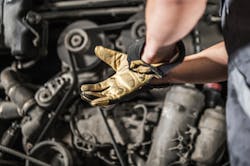Increased vehicle complexity, high cost of diagnostic tools and equipment, and a shortage of qualified technicians are just a few of the challenges fleets are facing today. The common thread of these challenges is that they revolve around the maintenance and repair of trucks and trailers.
In the past fleets opted to either perform maintenance and repair in-house or outsource it to a firm that specializes in vehicle maintenance and repair—an OEM dealer or an independent service provider. People who know me have heard me use this phrase, “You have two options: you can build it or buy it,” on many occasions to describe the options available to fleets. That certainly applies to the decision about maintenance and repair.
See also: Simple things can help with technician retention
More recently there has been some movement to dedicated on-site maintenance where a company takes over a fleet’s existing shop and continues to focus only on that fleet’s assets while removing the headaches of a fleet operating its own shop.
While there are many reasons why moving to a dedicated on-site maintenance model makes sense, the most compelling revolves around technicians. Consider this: The U.S. Bureau of Labor Statistics says that the technician shortage will grow by 28,000 every year between now and 2030. Finding technicians can be time-consuming and once hired there is no guarantee that a technician will stay with you. Here is another startling statistic: According to ASE, 41% of new technicians will leave the industry within two years of graduating from tech school.
The next hurdle is having the needed equipment needed to properly diagnose today’s sophisticated equipment. There is no universal diagnostic tool that can be used on every make and model of truck which means the fleet needs to invest in multiple diagnostic tools and technicians need to master the idiosyncrasies of each one.
See also: Saving costs when sourcing parts
Given today’s parts shortages, having the right parts in stock so they are available when needed has become increasingly stressful as new parts sources have to be found and vetted and parts shipments tracked constantly to ensure delivery dates are met. Moving to a dedicated on-site maintenance model removes the parts burden from the fleet. The company taking over the fleet’s shop assumes responsibility for managing the parts inventory and often has purchasing power that allows parts to be secured at lower cost.
When it comes to maintenance and repair it is no longer a choice between doing it yourself or taking it to a dealer/repair shop. Fleet managers now can have the benefit of a team dedicated to their fleet without the burden of operating a shop. It’s something to think about.
Gino Fontana, CTP, is COO and EVP at Transervice Logistics Inc. Prior to this recent promotion, he was VP of operations at Berkeley Division and Puerto Rico. He has more than 35 years of experience in the transportation and logistics industry with both operational and sales experience.




